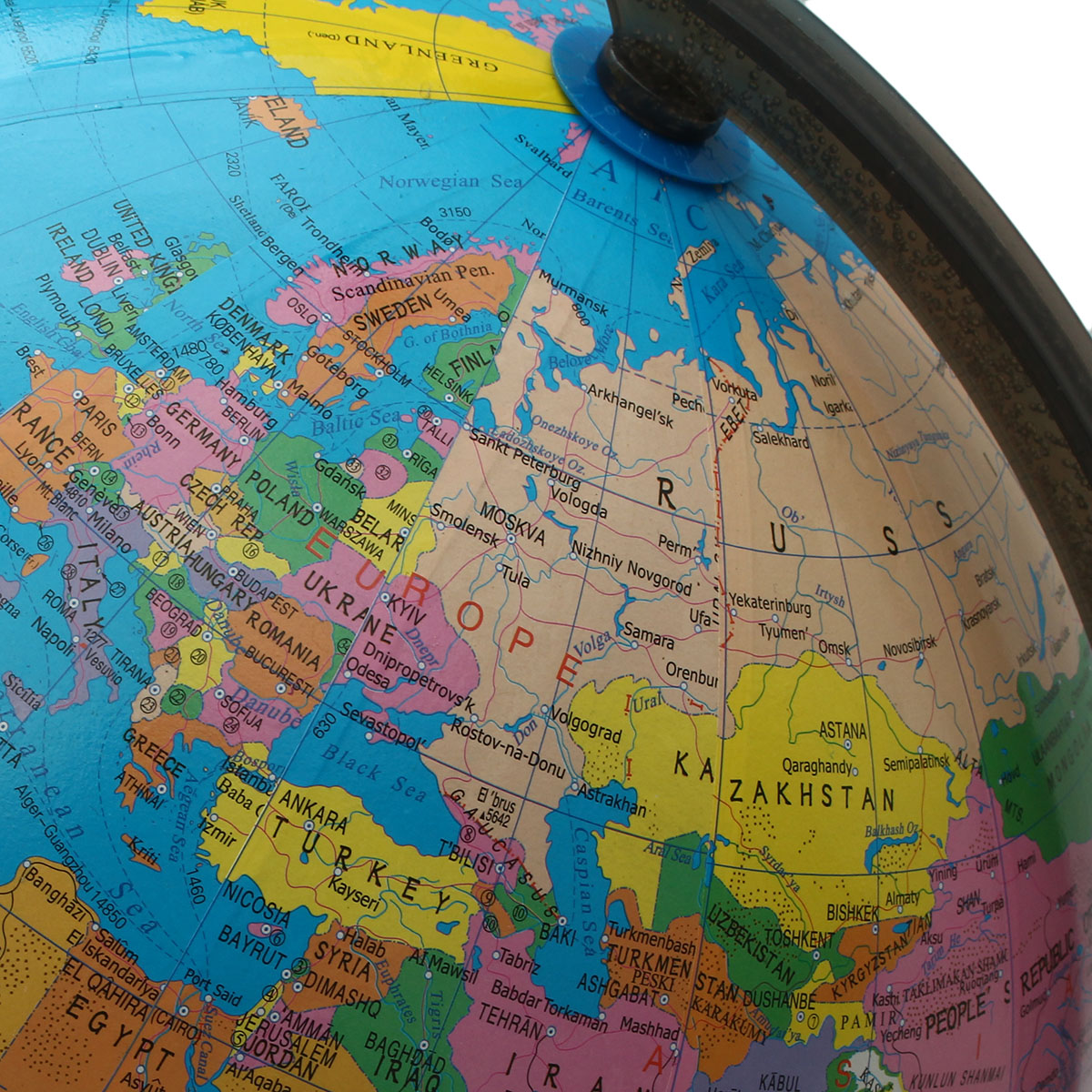

Many terrestrial globes have one celestial feature marked on them: a diagram called the analemma, which shows the apparent motion of the Sun in the sky during a year.

Globes may also show the boundaries of countries and their names. Most modern globes are also imprinted with parallels and meridians, so that one can tell the approximate coordinates of a specific location. For example, one manufacturer produces a three dimensional raised relief globe with a 64 cm (25 in) diameter (equivalent to a 200 cm circumference, or approximately a scale of 1:20 million) showing the highest mountains as over 2.5 cm (1 in) tall, which is about 57 times higher than the correct scale of Mount Everest. In these, elevations and depressions are purposely exaggerated, as they otherwise would be hardly visible. Some globes have surface texture showing topography or bathymetry. Globes are also made in many other sizes. In imperial units, many globes are made with a diameter of one foot (about 30 cm), yielding a circumference of 3.14 feet (about 96 cm) and a scale of 1:42 million. Many globes are made with a circumference of one metre, so they are models of the Earth at a scale of 1:40 million. The Earth's circumference is quite close to 40 million metres.

A globe is the only representation of the Earth that does not distort either the shape or the size of large features – land masses, bodies of water, etc. Students and teacher looking at a terrestrial globe of the earth.įlat maps are created using a map projection that inevitably introduces an increasing amount of distortion the larger the area that the map shows. The oldest surviving celestial globe sits atop the Farnese Atlas, carved in the 2nd century Roman Empire. The oldest surviving terrestrial globe is the Erdapfel, made by Martin Behaim in 1492. The first known mention of a globe is from Strabo, describing the Globe of Crates from about 150 BC. The word globe comes from the Latin word globus, meaning " sphere". Typically, it will also divide the celestial sphere into constellations. A celestial globe shows notable stars, and may also show positions of other prominent astronomical objects. Some have raised relief to show mountains and other large landforms. It might show nations and major cities and the network of latitude and longitude lines. A terrestrial globe shows landmasses and water bodies. A model globe of the celestial sphere is called a celestial globe.Ī globe shows details of its subject. A model globe of Earth is called a terrestrial globe. Globes serve purposes similar to maps, but unlike maps, they do not distort the surface that they portray except to scale it down. A globe is a spherical model of Earth, of some other celestial body, or of the celestial sphere.


 0 kommentar(er)
0 kommentar(er)
